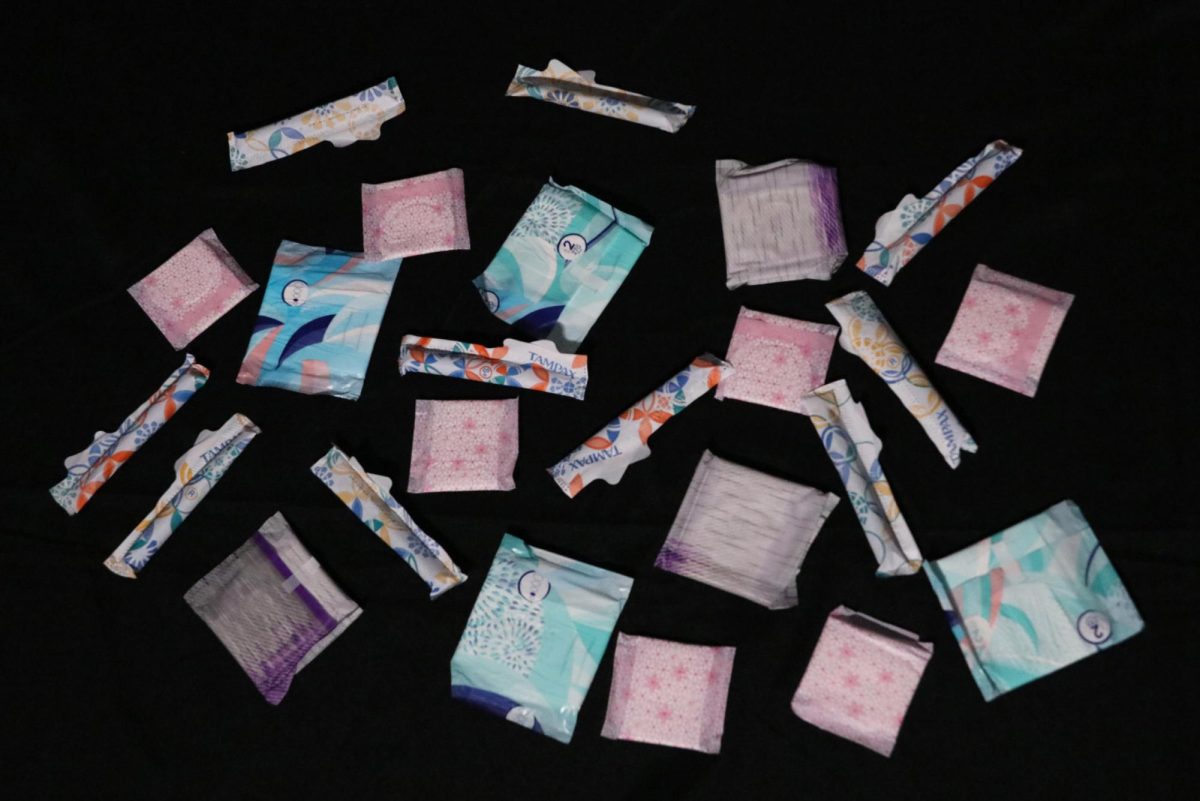Following student-led movements, administration has been assisting in getting free menstrual products in school bathrooms. So far, products are being supplied in the 1500 and 2500 hallway bathrooms, but it is imperative that this movement is expanded and products can be supplied in as many bathrooms as possible.
It is not only a school’s responsibility to meet a student’s educational needs, but it is essential that students feel safe, comfortable and healthy. Part of this starts with providing accessible menstrual products to female students.
Menstrual products are not taboo, and should not be hidden away — they are a basic need for all women.
The nurse’s office has been the primary location of spare menstrual products, but that has its flaws. Following the COVID-19 pandemic, the nurse’s office has been almost inaccessible to students. Female students do not have time to fill out a form and wait for a text of permission just to get a pad or tampon. This inaccessibility sparked student-led movements such as former club Hebron GirlUp and current club The Untitled Social Project. While strides have been made, such as previously providing menstrual products in the school library and current shelves of products in the 2500 and 1500 hallways, it is imperative that products become more accessible within student-used bathrooms.
It is embarrassing for students to have to announce to their teacher that they’ve started their period and need to go change; it is even more embarrassing when 60.8% the 102 students who responded to a survey sent out by The Untitled Social Project said they’ve been denied access to the bathroom by teachers, even after announcing their medical reasons.
Even if a student is allowed to go to the restroom, they still have to go out of their way to separate hallways, the library or the nurse’s office. If the student has not already bled through their clothes by then, they also face the possibility of getting stopped in the hallways and having to explain that they’re on their period just to avoid getting in trouble. These endless journeys and conversations interrupt valuable class time, meaning female students are missing out on their education just to get a tampon or pad.
Females have to change their tampons or pads every 4-8 hours, meaning they’ll use about 3-6 tampons/pads a day. Periods generally last an upward of seven days, which is 21-42 tampons/pads a week and 252-504 tampons/pads a year. A box of 50 tampons is about $10, meaning women will spend an average of $50-100 on menstrual products every year. This can easily become a financial burden to families, as 12.7% of the same students surveyed by The Untitled Social Project said they haven’t been able to afford menstrual products at times. Menstrual products are essential in order to keep women healthy, and it is disturbing that so many cannot afford such a vital necessity. Schools should provide a safe space for female students to maintain their health and have access to something they may not be able to afford otherwise. Considering that students are in school for eight hours, five days a week, that’s at least ten tampons/pads per menstrual cycle that they wouldnt have been able to afford otherwise.
Administration has been actively working with students in order to provide menstrual products in the bathroom; however, the administration said the school does not have much room in its budget to afford it. Providing menstrual products in the bathrooms includes purchasing multiple shelves and enough products to keep the shelves full year-round. It is possible that the district could provide extra money in the school’s budget for this, but it must be presented to the school board first and then approved. Another hindrance in getting products in all bathrooms is public access. It’s difficult to provide menstrual products in certain bathrooms, such as the fine arts hall, where parents and community members are constantly going in and out, potentially using the products intended for student use. It would cost even more money to have to maintain these bathrooms even more.
Considering these obstacles, it is imperative that students assist with this movement. Organizations at Hebron, such as The Untitled Social Project, are hosting fundraisers and accepting donations for period products. Other drives should be held in the future, such as a period product drive that could potentially be helpful in this movement, as long as students participate. Students should join organizations working toward this cause, work together and build the movement all the way for the district to recognize and notice.
This movement is not impossible, but it is up to the student body to participate and create real change for our female students.




